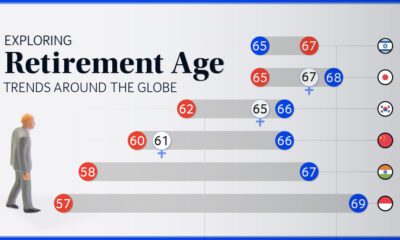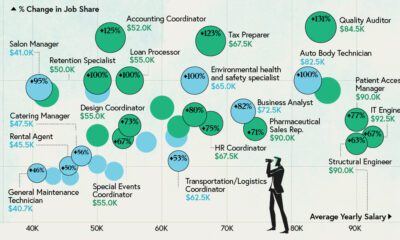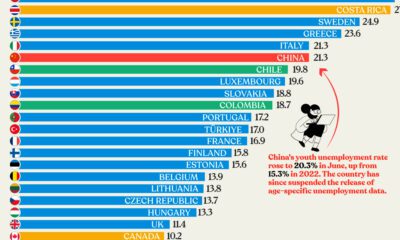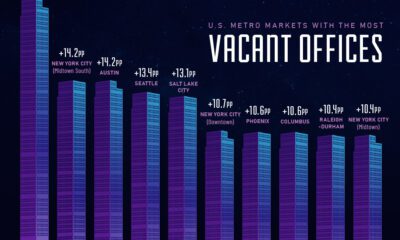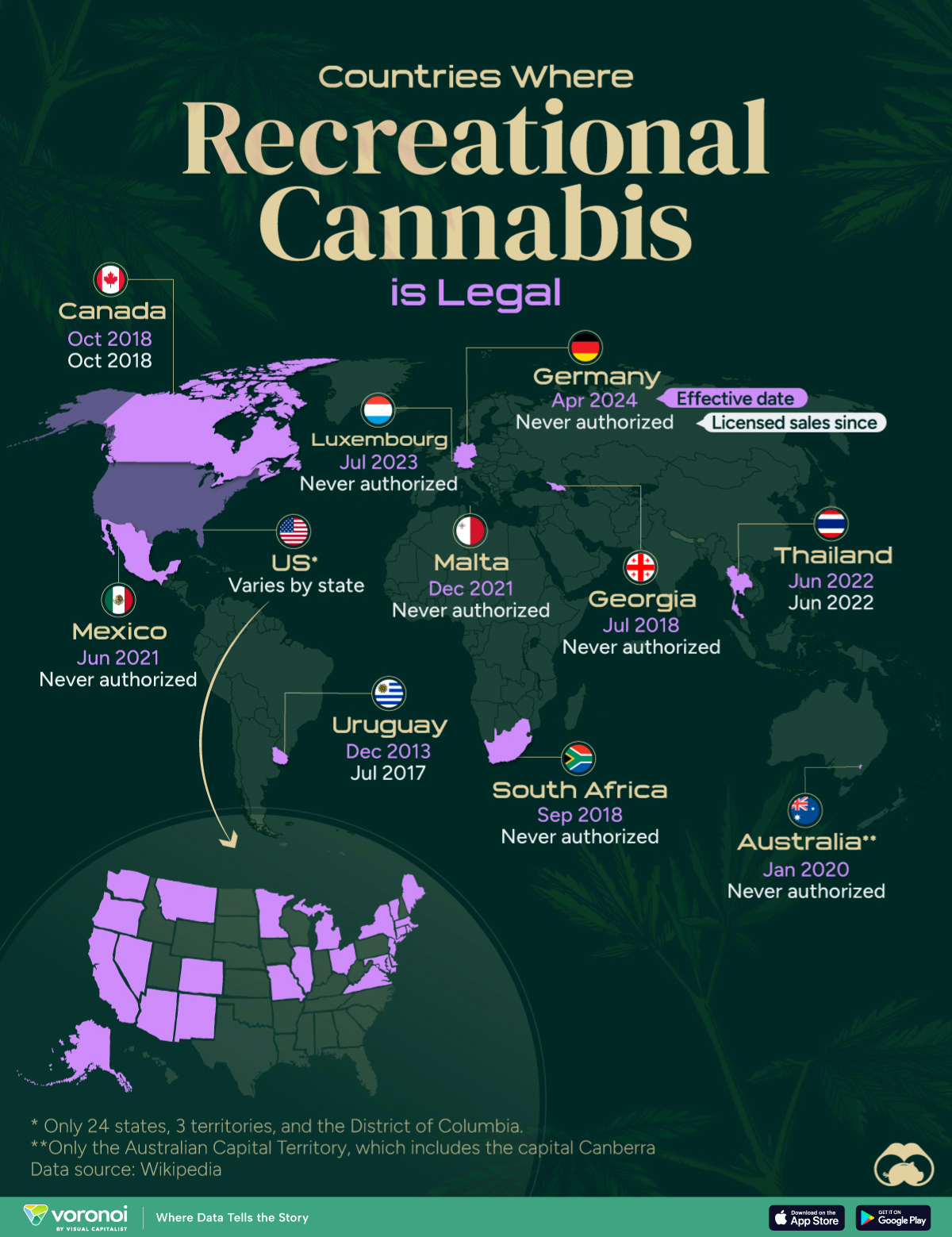Misc
Ranked: The Cities with the Best Work-Life Balance in the World
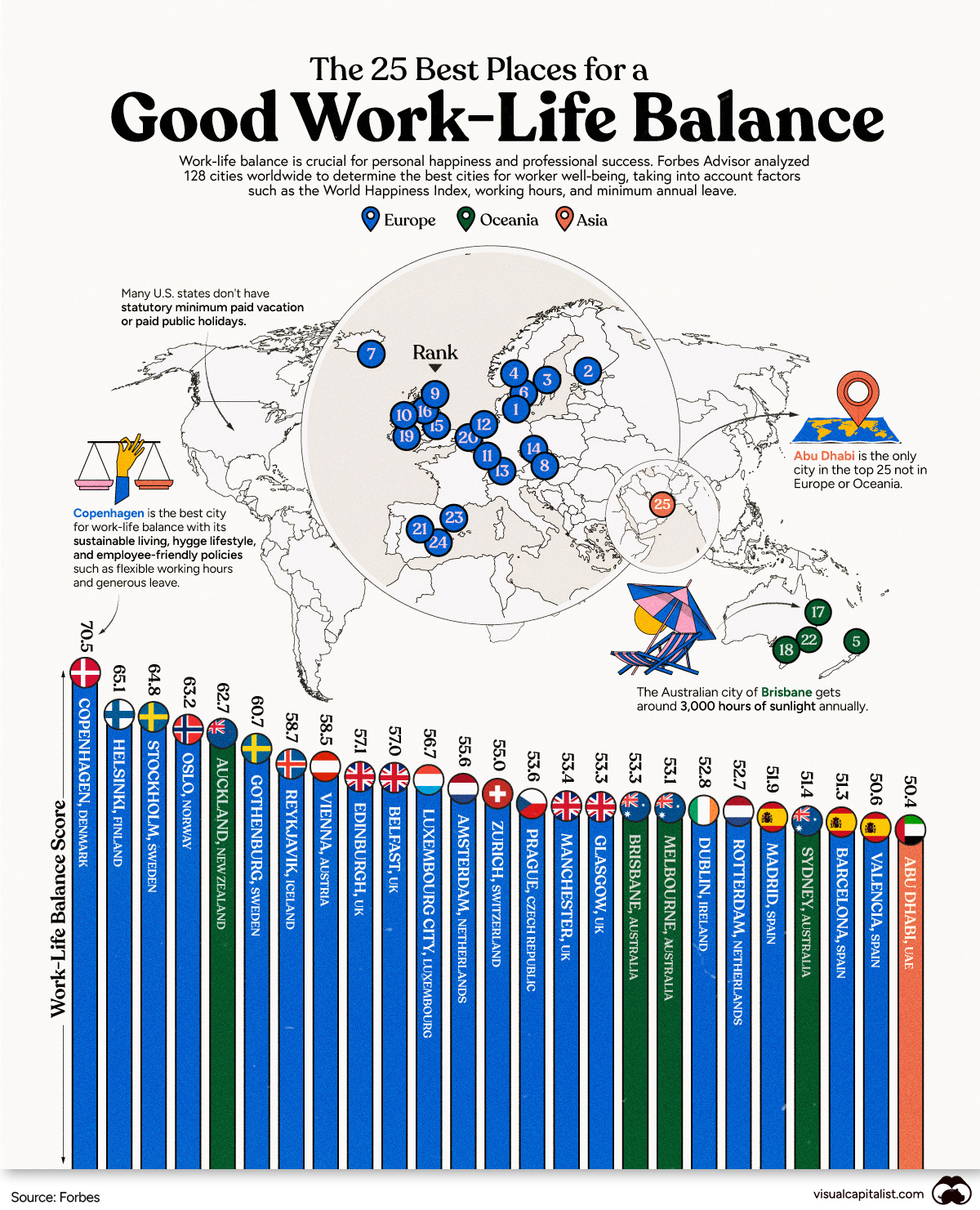
Ranked: The Cities with the Best Work-Life Balance in the World
While some careers can be relatively stress-free, maintaining a healthy work-life balance can seem impossible for many.
The easy access to technology, blurred boundaries around work and personal time, and fear of job loss push many to work overtime, and fail to use vacation time or sick leave.
However, in some cities across the world, the situation is very different. In top-ranked locales, companies offer working professionals an opportunity to maintain a work-life balance through good healthcare, ample vacation time, and so on.
In this graphic, we use the Forbes Advisor 2023 ranking to highlight the top cities in the world that encourage work-life balance. The ranking compares data from 128 cities to form the Work-Life Balance Score, which is marked on a scale of 100. The higher the score, the better work–life balance workers in a city have. We’ve covered the top 25 in the graphic above.
Europe Tops the Chart
Twenty of the 25 cities with the best work-life balance fall in Europe. The diverse range of cultures and lifestyles in these cities offers its residents a balance between work and personal life.
The top city on this list, with a work-life balance score of 70.5/100, is Copenhagen, Denmark. The city’s high standard of living, low unemployment rate, 52-week-long parental leave, and focus on sustainability and green spaces all contribute to the city’s top score. It also helps that the Danish lifestyle focuses on taking time for self-care and relaxation.
Healthy lifestyles along with generous vacation and parental leave policies also placed the European cities of Helsinki, Stockholm, and Oslo in the top five in this list. In fact, the average employee work week in these cities falls below 30 hours. The proportion of remote jobs in Helsinki, Finland is over 50%.
Many companies in Europe prioritize employee well-being, which has led to the emergence of a wellness culture. This culture includes practices such as remote work and mental health support.
Balancing Work and Life in Oceania
Although Europe dominates the top 25 list, some cities in Oceania also boast of healthy work-life balance scores.
Ranked 5th on the list of cities with the best work-life balance, workers in Auckland, New Zealand, have a 26.3-hour work week on average and a year’s worth of parental leave.
Meanwhile, the cities of Brisbane (53.3), Melbourne (53.1), and Sydney (51.4) in Australia follow an average work week of 32.4 hours to 38 hours. The sunny weather in these cities also positively influences their scores.
For Some, Safety is Key
UAE’s capital city is the only Asian city to make it to this top 25 list, and this is despite its high property prices and relatively low number of vacation days available to workers. On the flip side, the city is safe, sunny, and boasts a high quality of life.
Where Does This Data Come From?
Source: Forbes Advisor’s Work-Life Balance Index 2023
Data notes: This ranking the data from 128 cities to form the Work-Life Balance Score, which is marked on a scale of 100. The study analyzed various “Best Cities to Live In” indices, narrowing down those which had available data in the following key categories between January and February 2023. The following indices and metrics were used: World Happiness Index, Gender Inequality Index, Average working hours, minimum legal annual leave, property price to income ratio, proportion of remote working vacancies, maternity leave policies, parks and nature reserves per capita, unemployment rate, sunlight hours. Data was collected between January – Feb 2023. See the source for full details.
United States
Mapped: Countries Where Recreational Cannabis is Legal
In total, only nine countries have fully legalized recreational cannabis use.
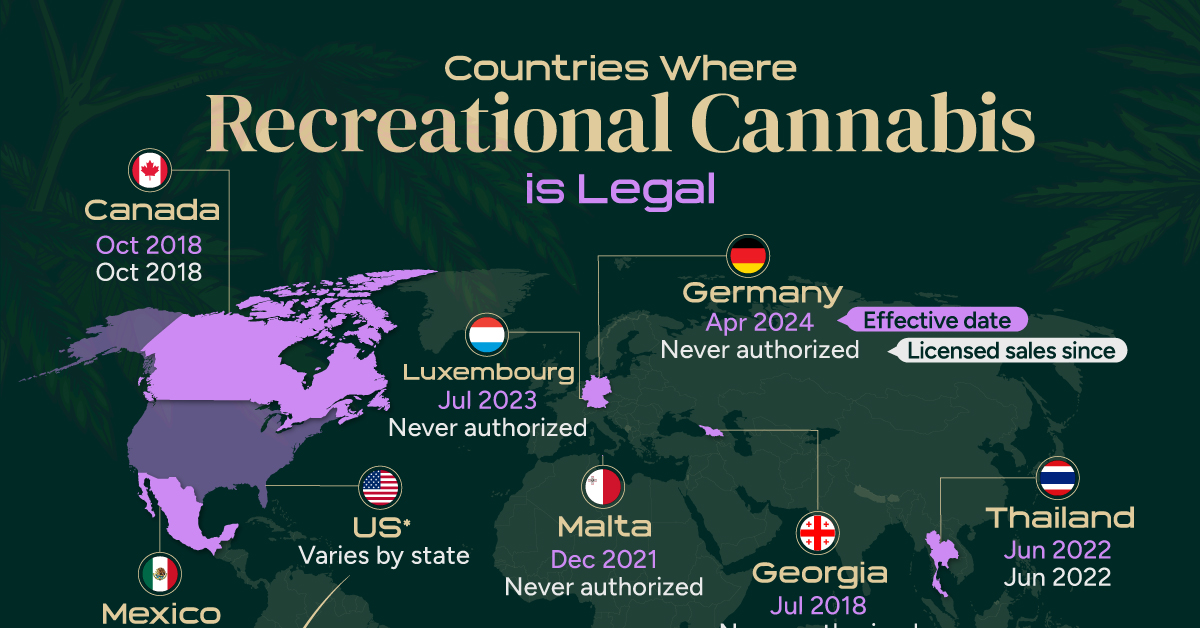
Countries Where Recreational Cannabis is Legal
This was originally posted on our Voronoi app. Download the app for free on iOS or Android and discover incredible data-driven charts from a variety of trusted sources.
In 2024, Germany became the third European Union country to legalize cannabis for personal use, following Malta and Luxembourg.
Here, we map the countries where recreational cannabis use is allowed as of April 2024, based on data from Wikipedia.
Limited to Few Countries
In total, only nine countries have legalized recreational cannabis use nationwide. However, just a few of them have licensed sales.
| Country | Effective date | Licensed sales since |
|---|---|---|
| 🇺🇾 Uruguay | December 2013 | July 2017 |
| 🇬🇪 Georgia | 30 July 2018 | Never authorized |
| 🇿🇦 South Africa | 18 September 2018 | Never authorized |
| 🇨🇦 Canada | 17 October 2018 | 17 October 2018 |
| 🇲🇽 Mexico | 28 June 2021 | Never authorized |
| 🇲🇹 Malta | 14 December 2021 | Never authorized |
| 🇹🇭 Thailand | 9 June 2022 | 9 June 2022 |
| 🇱🇺 Luxembourg | 21 July 2023 | Never authorized |
| 🇩🇪 Germany | 1 April 2024 | Never authorized |
| 🇺🇸 U.S. | Varies by state | Varies by state |
| 🇦🇺 Australia | Varies by jurisdiction | Never authorized |
At the federal level, cannabis is still considered an illegal substance in the United States. That said, individual states do have the right to determine their laws around cannabis sales and usage. Currently, cannabis is allowed in 24 states, 3 territories, and the District of Columbia.
Interestingly, the oldest legal text concerning cannabis dates back to the 1600s—when the colony of Virginia required every farm to grow and produce hemp.
Since then, cannabis use was fairly widespread until the 1930s when the Marihuana Tax Act was enforced, prohibiting marijuana federally but still technically allowing for medical use.
Today, the U.S. cannabis market is a $30 billion business. By the end of the decade, that number is expected to be anywhere from $58 billion to as much as $72 billion.
Similar to the U.S., Australia does not allow the use at the national level, but cannabis can be used legally in the Australian Capital Territory, which includes the capital Canberra.
-

 Markets6 days ago
Markets6 days agoMapped: Europe’s GDP Per Capita, by Country
-

 Energy2 weeks ago
Energy2 weeks agoMapped: The Age of Energy Projects in Interconnection Queues, by State
-

 Mining2 weeks ago
Mining2 weeks agoVisualizing Global Gold Production in 2023
-

 Markets2 weeks ago
Markets2 weeks agoVisualized: Interest Rate Forecasts for Advanced Economies
-

 Economy2 weeks ago
Economy2 weeks agoThe Most Valuable Companies in Major EU Economies
-

 Markets1 week ago
Markets1 week agoThe World’s Fastest Growing Emerging Markets (2024-2029 Forecast)
-

 Markets1 week ago
Markets1 week agoVisualizing Global Inflation Forecasts (2024-2026)
-

 United States1 week ago
United States1 week agoCharted: What Southeast Asia Thinks About China & the U.S.






